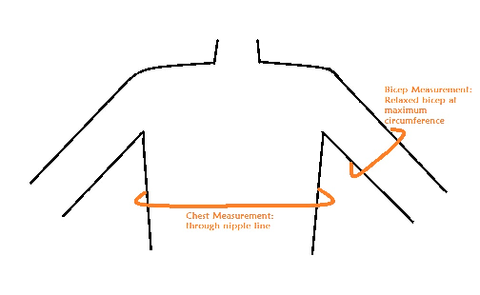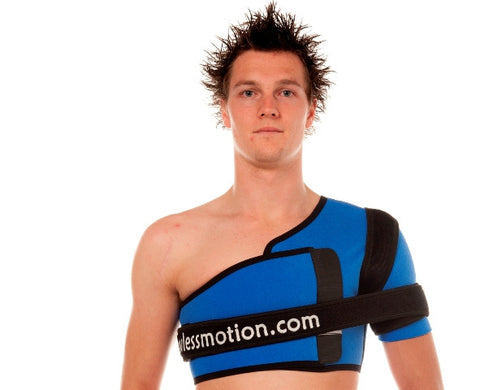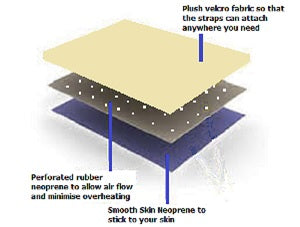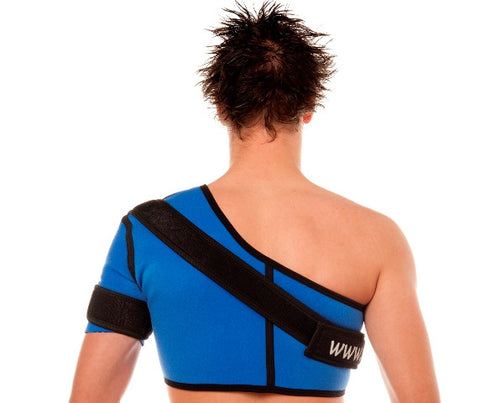Seven reasons why you need a Flawless Motion shoulder brace
by Margie Olds
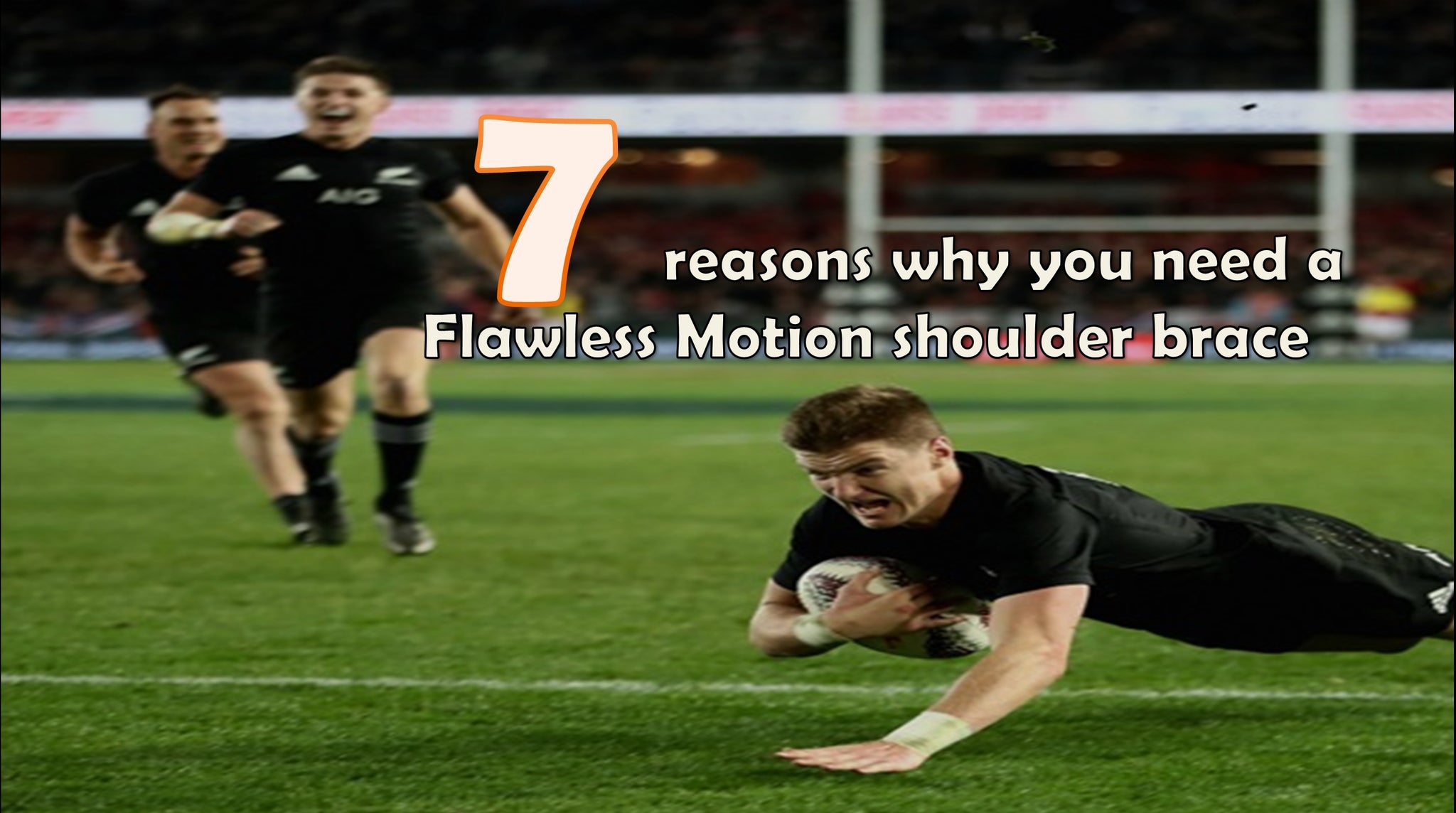
There are seven ways the Flawless Motion shoulder braces can help you after your painful shoulder injury.
1. Flawless Motion shoulder braces support the shoulder
Support of a painful injured shoulder is a vital part of treatment. Immobilization of the shoulder can speed up the recovery process, and decrease pain following your injury. Flawless Motion braces work to compress swollen and painful shoulders and aid in the recovery of inflammation. The braces can also support the injured muscles, allowing them to rest and recover quicker. An ideal brace will have a close fit, sized in several sizes and right or left sides to enable a snug fit. Some shoulder braces are not shaped for left or right sides and as a result do not adequately support the shoulder. Flawless Motion braces are shaped for left and right shoulders and ensure optimal support and comfort. Check out the sizes of the Flawless Motion shoulder braces here
2. Compression of the shoulder
Compression of the shoulder is thought to enhance the receptors in your skin by sending messages to your brain about the position of your shoulder. Research studies1,2,3 have shown that people who have suffered from instability in their shoulder (such as a dislocation) have a decreased sense of awareness in their unstable shoulder. This awareness is termed proprioception and includes knowledge about the position of your arm, the amount of force your muscles are applying, as well as the coordination with other muscles. Other research4 has shown that wearing a brace is able to improve the proprioception in unstable shoulders. These authors proposed that the beneficial effects of wearing a brace are due to the increased compression on the receptors in the skin. This allows the skin receptors to compensate for the damaged receptors in your shoulder capsule or muscle. An optimal fit sized for right and left shoulders is optimal in providing compression of the shoulder. The best brace for compression is the Flawless Motion multi-directional brace, as it has neoprene both in the front and back of the brace.
3. Protect the shoulder from further bumps and knocks
A Flawless Motion shoulder brace can also protect your painful injured shoulder from further bumps and knocks. Many of the tendons in the shoulder are near the surface and the wearing of a brace can protect the skin and superficial tendons from bumps and knocks. Wearing a Flawless Motion ACJ brace offer protection of the Acromio clavicular joint (ACJ) by the addition of a foam pad. Use of the Flawless Motion ACJ strap to any Flawless Motion multi-directional shoulder brace can also help with protection over a fractured clavicle, and support the fractured bone.
4. Decrease risk of dislocation
Wearing a shoulder brace may also decrease the risk of dislocation by limiting the range that the shoulder is able to move into. Nearly 95% of dislocations occur in an anterior direction 5 and most of these are with the arm stretched away from the body with the hand turned up to the sky. Dislocations in this position cause damage to the inferior glenohumeral ligament and labrum (the cartilage that increases the support in the shoulder). Some authors 6 have thought that if you limit the range of motion that the arm can move into, people will be less likely to have another dislocation. The Flawless Motion braces are unique in that it allows you to lift your arm up forwards in front of you without allowing you to move into riskier positions such as abduction. Thus you are still able to perform overhead activities but are limited from moving into risky positions. This allows you to get back into sport earlier, while still protecting your shoulder.
The most common direction of shoulder dislocation is in the front of your shoulder. The Flawless Motion Anterior shoulder brace has been specifically designed to decrease risk of dislocation in people with an anterior shoulder dislocation
5. Strengthening the shoulder after injury
Strengthening of the shoulder is also possible while wearing a shoulder brace. The Flawless Motion braces have neoprene straps which offer more resistance as they are taken into more stretch. Every time the arm is moved, the muscles have to work harder to resist against the straps. Because some research7 has shown that shoulder injuries often result in, or are accompanied by, decreased strength of the shoulder muscles, many physiotherapists and surgeons recommend strengthening the shoulder joint after injury. Wearing a shoulder brace can therefore facilitate the strength of the injured shoulder. Offering increased resistance to movement of the limb will also have the effect of slowing down the speed that the arm can move into risky positions. Research 8 has shown that muscles of unstable shoulders take longer to become active than the muscles of normal healthy shoulders. Therefore slowing down or decelerating the limb gives the muscles on the unstable shoulder more time to react, and therefore more time to get ready to offer more support and resistance to knocks and force from the external environment. The Flawless Motion uses straps the stretch to allow your muscles time to become active and then protect your shoulder. The increased time to decelerate has been shown to be more comfortable than other braces that use webbing to decrease the movement of the arm... the arm does not suddenly and unexpectedly stop moving like with other braces.

6. Keep cool while supporting the shoulder
Anterior Flawless Motion braces have been designed to decrease heat retention. Other shoulder braces will promote heat retention from wearing the brace. However, there is actually no evidence that heat retention aids recovery after a shoulder injury. Many people prefer not to overheat while playing sport - especially in hot conditions. The Flawless Motion anterior brace, Flawless Motion Women's anterior brace, and Flawless Motion Bilateral anterior brace have been designed specifically to decrease heat retention and provide for support for you if you have had an anterior shoulder dislocation.
Anterior brace versions are available with mesh inserted in place of neoprene where support is not required and all braces are made of the thinnest breatheable neoprene available with holes spaced in the fabric to allow the sweat to escape away from the body. Research has shown that increased heat of the body has negative effects on performance 9 and therefore keeping the body cool, or limiting the heat retention is ideal in sporting braces. This is one of the key differences between Flawless Motion shoulder braces and braces which are made to wear in general every day use. Keeping cool is also more comfortable and means you can wear it longer and have increased benefit due to the other beneficial factors,
7. Restore confidence after injury
Some research10 has proposed that the benefits of wearing a brace are due to the wearers simply feeling better because they are doing something to help their injury. They feel less vulnerable. More research is being undertaken on confidence after injury. Recent research11 has shown that fear of reinjury can predispose you to recurrent shoulder instability. Customers who wear a Flawless Motion shoulder have reported that they feel more confident, just by putting the brace on in the clinic. This encourages you to take part more readily in activities, maintain your fitness and social interaction with other team members. The shoulder brace that provides the most confidence is the Flawless Motion multi-directional shoulder brace as it has all over neoprene which compresses the shoulder shoulder joint in all directions
Summary of how a Flawless Motion Shoulder brace helps you after injury
There are seven reasons why wearing a shoulder brace can be beneficial. Initially in the early stages following injury they can be used for support and protection to aid the healing process. The best braces for support are the Flawless Motion Rotator Cuff Brace, or the Flawless Motion ACJ Brace.

Dr Margie Olds is a internationally renowned physiotherapist with a special interest in shoulder injuries. She developed the Flawless Motion braces to help people get back into sport as quickly and safely as possible. She has recently finished her PhD on predicting shoulder dislocations after injury. She is also involved in other research with NZ Rugby developing clinical tests that determine whether people are ready to return to sport after a shoulder injury
Shoulder Brace References:
- Lephart, et al. (2002). Proprioception of the shoulder joint in healthy, unstable and surgically repaired shoulder. Journal of Shoulder and Elbow Surgery. 3, 371-380
- Zuckerman et al, 1996). The effect of instability and subsequent anterior shoulder repair on proprioceptive ability. Orthopaedic Trans. 21. 274.
- Smith RL, Brunolli J. Shoulder kinesthesia after anterior glenohumeral joint dislocation. Phys Ther. 1989 Feb;69(2):106–112.
- Chu et al, (2002). The effect of a neoprene shoulder stabilizer on active joint reposition sense in subjects with stable and unstable shoulders. Journal of Athletic Training. 37(2), 141-145.
- Kirkley,A., Griffin, S, Richards, C., Miniaci, A., Mohtadi, N. (1999) Prospective Randomized Clinical Trial Comparing the Effectiveness of Immediate Arthroscopic Stabilization Versus Immobilization and Rehabilitation in First Traumatic Anterior Dislocations of the Shoulder Arthroscopy, the Journal of Arthroscopic and Related Surgery. 15(5), 507-514
- DeCarlo, M., Malone, K., Gerig, B. & Hunter, M. (1996). Evaluation os shoulder instability braces. Journal of Sport Rehabilitation, 5, 143-150
- Olds,M., McNair, P., Nordez,A., & Cornu, C. (2010). Active stiffness and strength
- Myers, J.B., Ju, Y-Y, Hwang, McMahon, PJ, Rodosky, MW, & Lephart, SM (2004) Reflexive muscle activation alterations in shoulders in anterior glenohumeral instability
- Maughn, RJ, Shirreffs,SM, & Watson, P. (2007). Exercie, heath, hydration and the brain. Journal of the American College of Nutrition, 26(5), 604S-612S
- Kirkley A, Webster-Bogaert S, Litchfield R, Amendola A, MacDonald S, McCalden R, Fowler P (1999). The effect of bracing on varus on arthrosis. The Journal of Bone and Joint Surgery. 81(4), 539-548.
- Olds, Ellis, Parmer & Kersten (2019). Who will redislcoate his/her shoulder? Predicting recurrent instability after a first traumatic anterior shoulder dislocation. BMJ Open Sports and Exercise Medicine. 5.


